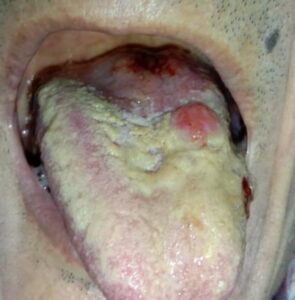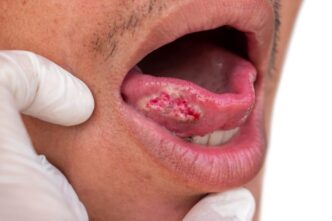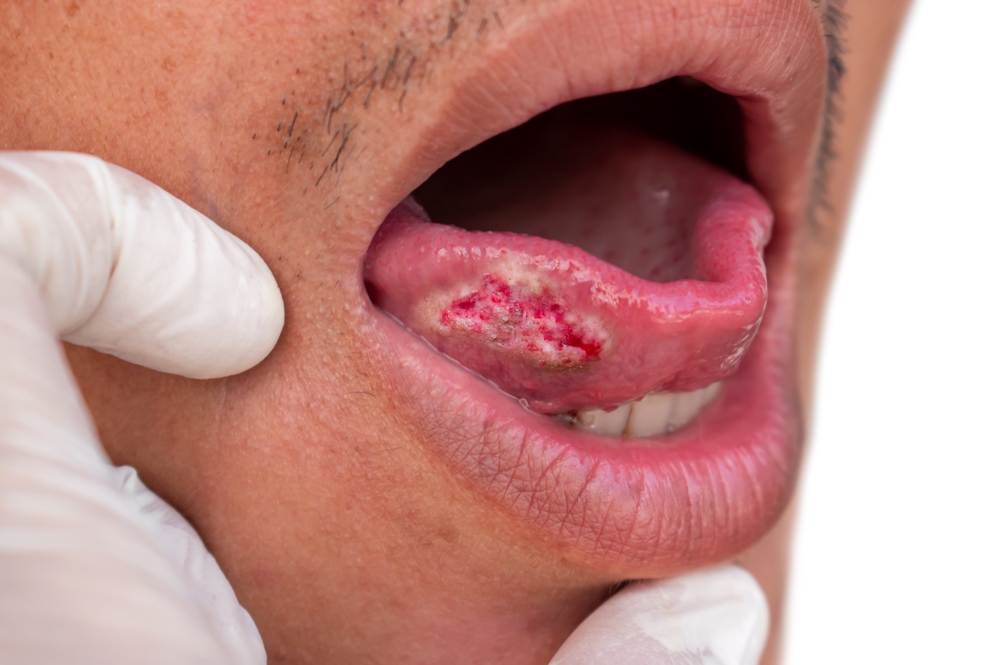Tongue cancer or tongue carcinoma is a serious condition where abnormal cells grow uncontrollably in the tongue. If not detected and treated early, it can spread often quickly to other parts of the body, making treatment more difficult and putting a person’s life at risk. Awareness and early action are key.
WORDS ASSOCIATE PROFESSOR DR HARDIP SINGH GENDEH
 FEATURED EXPERT FEATURED EXPERTASSOCIATE PROFESSOR DR HARDIP SINGH GENDEH Lecturer and Specialist Ear, Nose & Throat Surgeon Department of Otorhinolaryngology, Head and Neck Surgery Faculty of Medicine Universiti Kebangsaan Malaysia |
A CLOSER LOOK AT TONGUE CANCER
Tongue cancer can appear in different ways.
- Sometimes it grows outward as a lump (fungating tumour).
- Sometimes it eats inward like a sore (ulcerative tumour).
- Sometimes the cancer is a combination of both fungating and ulcerating tumours.

The most common type of tongue cancer, making up about 90% of cases, is called squamous cell carcinoma (SCC), which starts in the surface layer or epithelium of the tongue.
Where Does the Cancer Occur?
The part you can see when you open your mouth wide is the front two-thirds, while the base sits further back in the throat, near the voice box.
- Most tongue cancers develop on the sides of the tongue that you can see.
- More rarely, they can start at the tip or at the base.
RISK FACTORS
- Repeated trauma or injury to the tongue due to factors such as:
- Recurrent biting of the same area
- Ill-fitting dentures rubbing on the tongue
- Repeated injuries due to sharp edges of the teeth
- Tobacco use, either smoking or chewing betel nuts with tobacco.
- Alcohol use.
- Human papilloma virus (HPV) infection, common among younger people; treatment of the resulting tongue cancer tend to have better outcomes.
- Diet low in fruits and vegetables.
| Chronic or long-term smokers that also consume alcohol in high amounts are especially at HIGHER risk of developing tongue cancer. |
SYMPTOMS TO WATCH OUT FOR
- Swelling on tongue surface with red or white discolouration
- Little grooves or scalloped edges along an area at one side of the tongue (indentation), that keep growing in size and cannot be healed
- Troubles in swallowing (either difficult or painful) and choking episodes
- Ulcers that do not heal after a few days
Early signs may be often subtle, resulting in many people assuming that there is nothing to worry. This results in delays in seeking treatment.
If you have any of the above signs persistent for 2 to 3 weeks, consult a doctor for further examination.
HOW A DOCTOR WILL CHECK FOR TONGUE CANCER
Preliminary Examination
Your doctor will ask you several important questions pertaining to the risks of tongue cancer.
Physical Examination
- The doctor will examine the tongue.
- The doctor will need to feel the swelling to estimate its size and extension to the surrounding structures (other parts of the tongue, involving gums or lips).
- Endoscopy examination may be required if there is an extended swelling or the back of the tongue is involved, in order for the doctor to better visualize the swelling.
- The doctor will also examine the neck for unusual swellings. Enlarged lymph nodes may suggest that cancer cells have spread into the lymphatic system.
Biopsy
- Quite often, a small amount of tissue at the affected tongue area will be collected, after anaesthesia is applied to that area first.
- If the swelling has many blood vessels, then the patient will be under general anaesthesia instead, due to risk of potential bleeding.
- The tissue sample will be sent to a histopathology laboratory to confirm whether cancer is present and if yes, the type and grade of the cancer.
Laryngoscopy
- This is a medical procedure to examine the throat, larynx or voice box, and surrounding structures using a thin, flexible tube-like device with light and camera (endoscope).
- It is performed when tumours are in the posterior or back of the tongue, to better assess the spread of disease.
Imaging
- A computed tomography (CT) scan or magnetic resonance imaging (MRI) are typically performed.
- This will allow the doctor to assess the size and depth of the tumour as well as its spread to surrounding structures and to other parts of the body such as the neck.
TREATMENT OPTIONS FOR TONGUE CANCER
Surgery
- The first line treatment for SCC of the tongue.
- Surgery is performed to remove the tumour as well as a small ring of normal tissue (cuff) around the tumour.
- At times, the ENT surgeon may consider also removing the lymph nodes on one or both sides of the neck, as cancers of the mouth area have a high chance of spreading to the neck lymph nodes.
Depending on the size and depth of the tumour, surgery may involve cutting out a small section of the tongue, more than half of the tongue, or almost the whole tongue.
- If more than half of the tongue is removed, tongue reconstruction can be performed using skin and donor tissue from other parts of the body such as the forearm.
- This procedure will add bulk to the tongue, which is required for chewing and swallowing.
- Over time, the skin of the donor tissue will be replaced with the patient’s own tongue mucosa.
Reconstruction may affect movements of the tongue and taste as our tongue also contains taste fibres. Speech may also be affected.
- The patient may need to use a feeding tube during the first few weeks after surgery.
- A speech therapist will assist with swallowing and speaking rehabilitation.
Furthermore, the doctor may also consider performing a temporary tracheostomy (creating a short-term opening in the neck to allow breathing) if there is a possibility of significant tongue swelling after the surgery.
- Such tongue swelling can block the breathing passageway, hence the necessity of this procedure.
- The tracheostomy will be reversed after the swelling goes down.
After the Surgery
- High grade tumours and large tumours may require radiotherapy with or without chemotherapy after the patient has healed from their surgery.
- If there is evidence of spread to other parts of the body, then chemotherapy is considered.
- The decision to undergo radiotherapy and/or chemotherapy will be decided by the oncologist.
We must also consider the effect on a patient’s emotions, mental health, and social life if they are unable to eat or drink like they used to.
- The inability to taste food like before can be depressing.
- A counsellor or psychologist can provide the necessary psychosocial support to these patients.
HOW TO REDUCE YOUR RISK OF TONGUE CANCER
- Avoid ill-fitting dentures or dentures with sharp edges.
- If you have teeth with sharp edges, such as a chipped tooth, that constantly injure your tongue, visit a dentist to trim away these sharp edges.
- Avoid smoking and drinking as they have a synergistic effect on the occurrence of tongue cancer.
- Early HPV vaccination may help to reduce incidence of HPV-associated tongue cancers.
- Seek early medical treatment if there is an abnormal tongue swelling or difficult/painful swallowing problems lasting for 2 weeks or more. Early detection is always better.
| This article is part of our series on health issues related to the ear, nose, and throat. |














